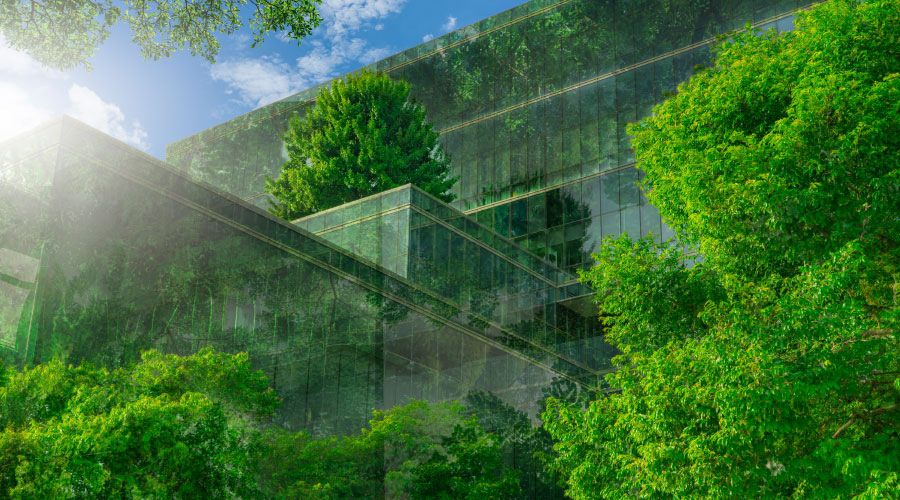 As part of the repositioning of a three-story, 80,000-square-foot building in Waltham, Mass., into Class A office space, Hobbs Brook Management installed solar arrays as parking canopies to help realize energy efficiency while giving parking areas a distinctive presence and offering tenant comfort.Warren Patterson Photography
As part of the repositioning of a three-story, 80,000-square-foot building in Waltham, Mass., into Class A office space, Hobbs Brook Management installed solar arrays as parking canopies to help realize energy efficiency while giving parking areas a distinctive presence and offering tenant comfort.Warren Patterson PhotographySolar Canopies Case Study: Best Practices Revealed
An attractive ROI and a contribution to sustainability goals made solar canopies an attractive option.
Solar is a major contributor to the ongoing commitment of Hobbs Brook Management (HBM) to environmental sustainability and corporate responsibility in its properties. In 2014, HBM established the goal of incorporating solar power into its buildings by placing a solar array on every garage that will support it and analyzing site positioning and the angle of the sun for all renovation and new construction projects.
HBM has invested heavily in solar energy generation in the form of garage-mounted, long-span steel canopy array systems. Each array sits atop a parking structure and produces enough power annually to directly offset the electricity consumption of the buildings it feeds by approximately 13 percent.
While the canopy application is more expensive than other types of applications such as ground mounting or a ballasted system on a building roof, the canopy systems align well with the overall strategy of HBM, which invests and develops with longevity in mind. The canopy system is essentially a galvanized steel rack for solar cells, meaning that at any point, if cells lose efficiency or are damaged, they can be individually replaced. Similarly, if a breakthrough in technology is made, the cells can be interchanged for brand new, more efficient cells at a fraction of what a new system would cost.
The installation of solar power systems helps building owners save money and meet sustainability goals. Upfront costs can be considerable but typically are recouped within seven to nine years, depending on the size of the array and the factors of its installation. Aspects such as the distance from the solar array to the building’s mechanical and electrical systems, design choices, and municipal requirements will influence the return on investment.
In today’s competitive market, a commitment to sustainability can set an office building apart and be the deciding factor for attracting and retaining tenants. While the design elements of a solar array determine the overall efficiency and performance potential of the system, each solar panel installed as part of an energy strategy can help to reduce carbon emissions. Commercial buildings can help achieve measurable results in the fight to address climate change.
Kevin Casey is vice president and chief operating officer, Hobbs Brook Management (HBM), a commercial property management and development firm specializing in leasing, construction and development of Class A office space. Bradley Cardoso, AIA, is principal architect for the company. As the owner and developer of nearly six million square feet of office space in Massachusetts, Rhode Island, Illinois, and Georgia, HBM has been incorporating energy efficiency and sound green building practices in the construction and renovation of its properties for more than three decades.
Related Topics:














